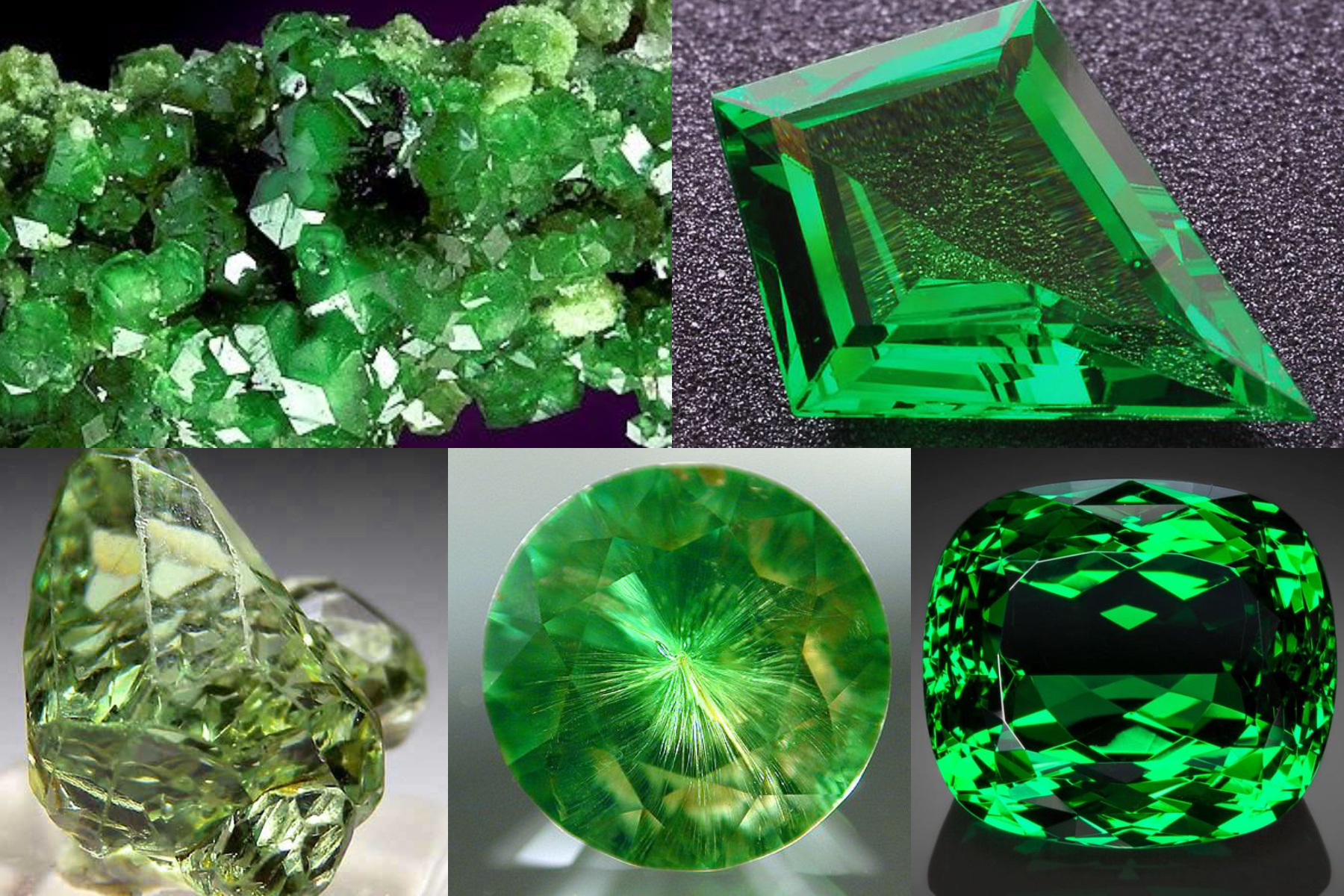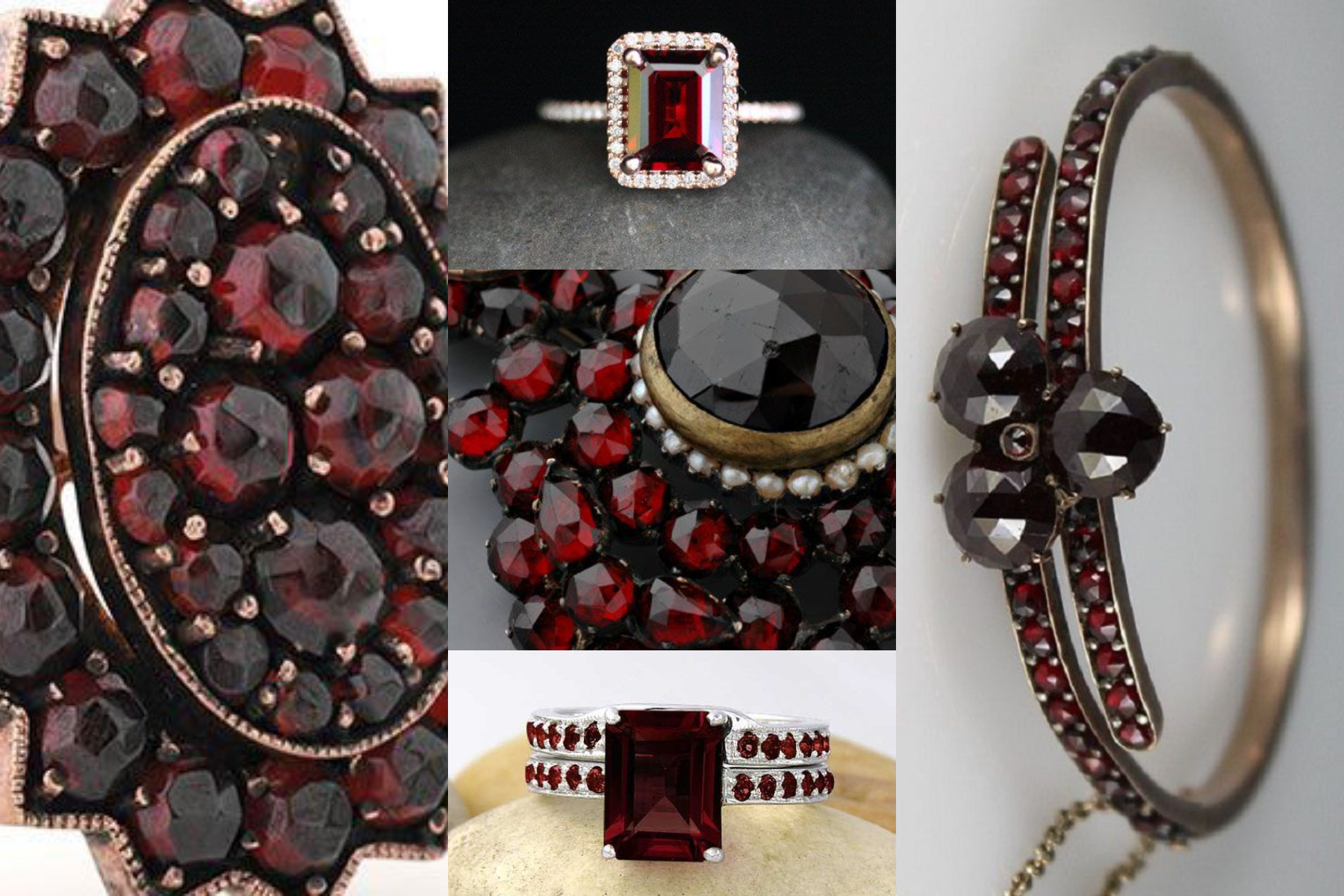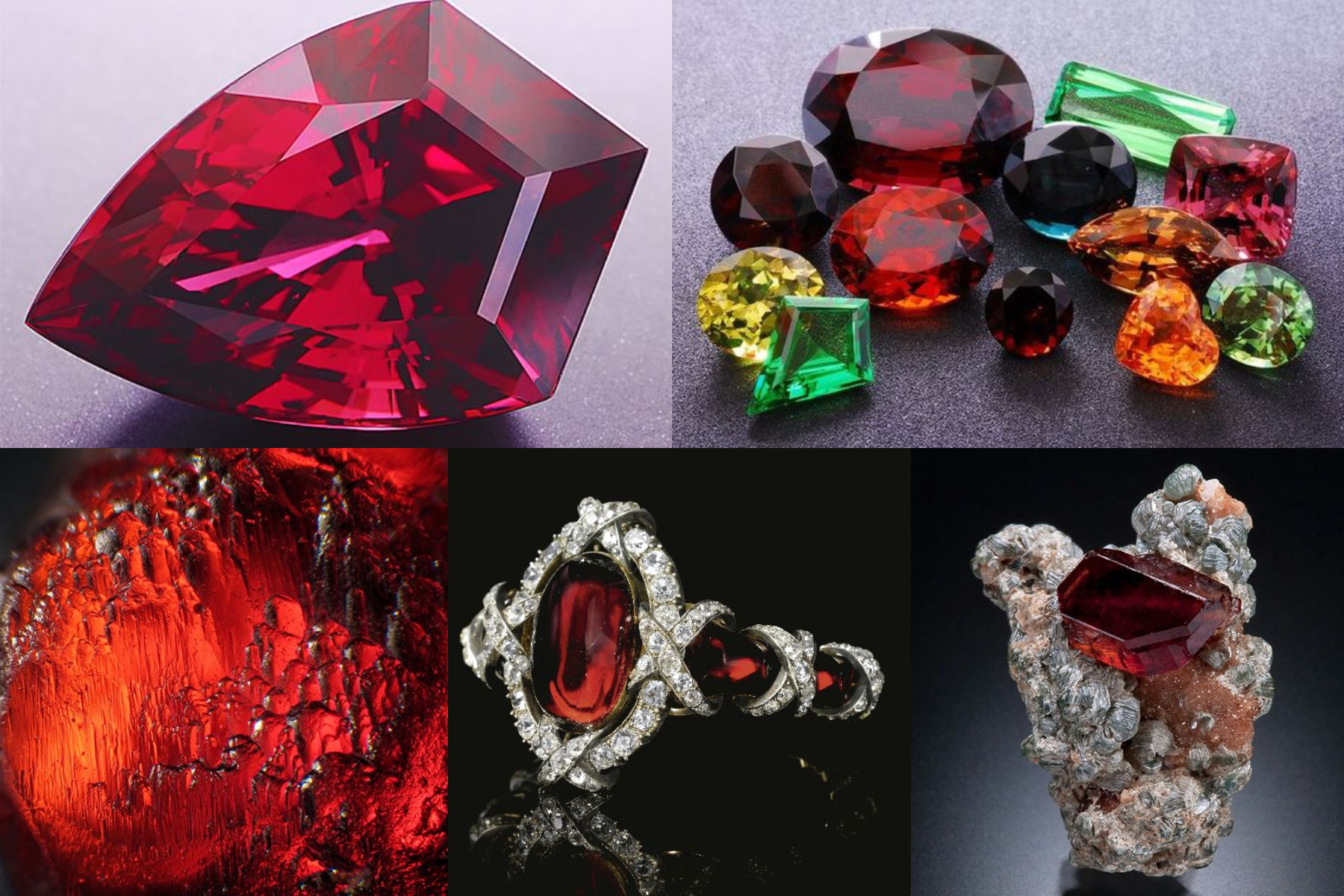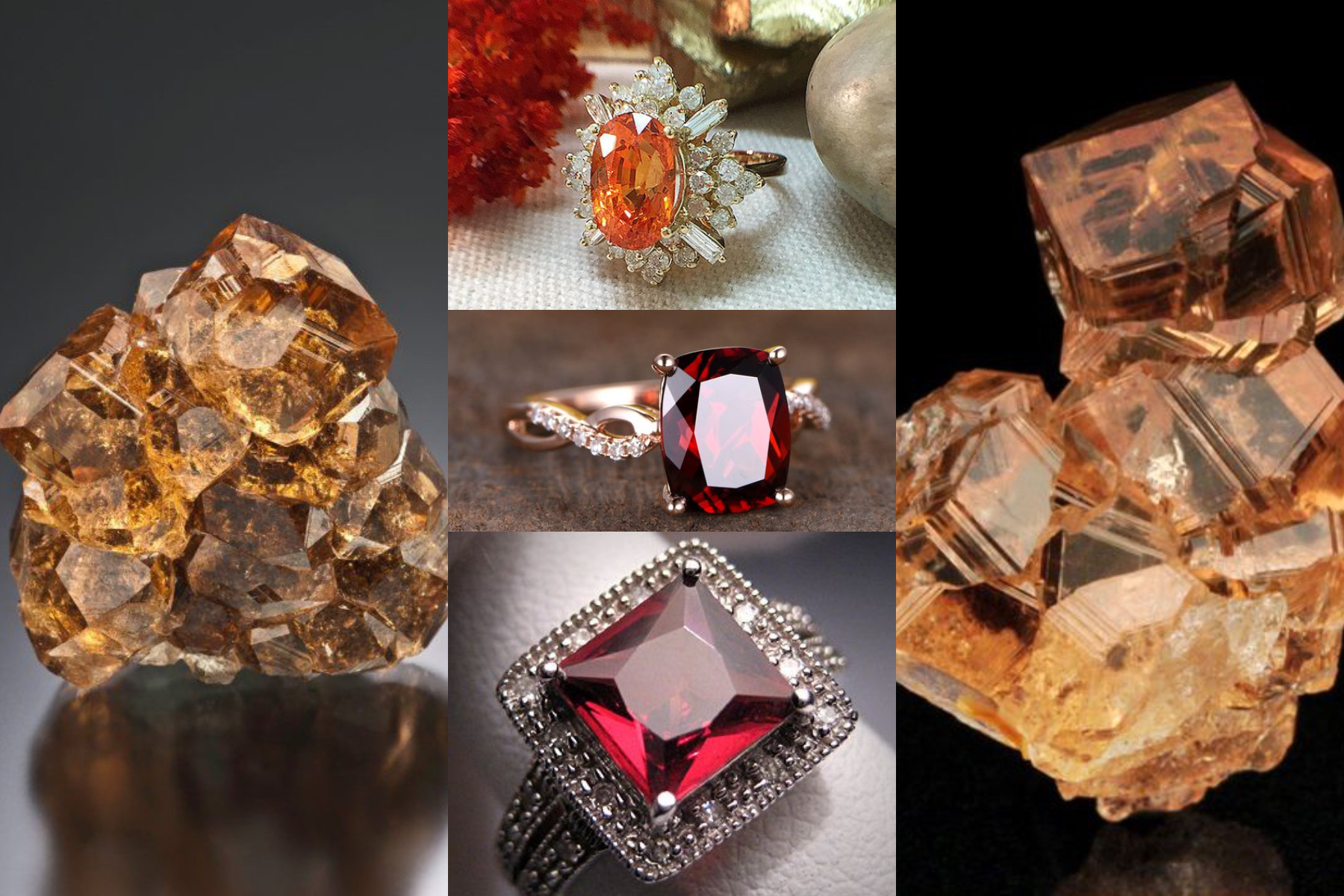Garnet for Those January Birth Babies
Reading Time:
1 min {{readingTime}} mins
With the start of a new year and a new month puts one of the most beautiful birthstones in the gemstone limelight. For those of you who are lucky enough to be born in the month of January, you are gifted with the kaleidoscopic birthstone of garnet.
Garnet is a term used to describe a group of closely related silicate minerals which together produce a painter's palette variety of colour. Even today, garnet remains to be the one mineral that displays the largest variety of colour, making it a popular choice across the jewellery industry. 'Garnet' comes from the Middle Age English word 'gernet' translating to deep red', further deriving from the Latin word 'Garantus' meaning 'Seed-like'. Such terms are of significance due to the resemblance of garnet crystals to the seed-like formations and bright red colour of pomegranate fruit.

Whilst garnets are widely known for their rich and deep red colour, the variety of colour in this stone varies depending on the chemical composition of the gemstone. Whilst the variety of garnet species have similar crystal structure, the different trace elements of metals found within their internal structure causes the colour variety. Such metals include iron, calcium and manganese.
The abundant spectrum of colours can range from rust-like reds, deep violet-reds, pinkish oranges and even some blue. Whilst Pyrope red is the most common garnet sourced worldwide, the rare and valuable Tsavorite garnet is favoured for its vibrant zesty green hue. It is this variant in chemical composition between each garnet variety that gives garnet a durable scale of hardness ranging from 6.5-7.5.

Whilst there are many forms and varieties of garnet, the six main species of this gemstone include:
- Almandine: most commonly orangey-red tones
- Pyrope: dark red tones
- Spessartine: rare orange tones
- Grossular: most varicoloured variety of garnet, rarely occurring as red
- Andradite: opaque and lustrous variety of various colours
- Uvarovite: the rarest garnet species in dark, rich greens

Just like its rich variety of colours, garnet is also known for its rich history and significance in ancient folklore. Throughout the18th and 19th Centuries, garnet was a popular choice of adornment throughout Europe and was prized across many historical eras from Victorian times, Ancient Egyptians and Ancient Romans. The bright nature of garnet has long been said to represent the vibrant personalities of those born in the month of January and thus those that wear it can enter the New Year with a renewed sense of prosperity, hope and everlasting happiness.
According to ancient folklore, pharaohs of Ancient Egypt utilised garnet gemstones as interlays within their jewellery and decorative carvings. Many warriors used garnet as a talisman for victory and protection when going into battle and would place the gemstone on their wounds as a catalyst of power and healing. Ancient Romans were also known to place garnet of high significance by using it within their wax intaglios of securing important documentation.

The legend and symbolic significance of garnet is still present today with many advocating its ability to purify the energies of the bodying re-energize the inner strength of its wearer. Garnet is not only recognised as the birthstone for the month of January but also the gem to represent the second wedding anniversary of a couple. Symbolic of permanence, stability and energetic passion, garnet has a strong connection to the security of love and emotional sentimentality.
Whether you're searching for a sense of purpose and prosperity in 2018 or simply buying a birthstone gift for someone close, the beautifully enchanting and dynamic garnet is without a doubt a stone with timeless elegance, artistry and charm.

Image credits: Pinterest, gia, gemsociety
Author:
Published:








